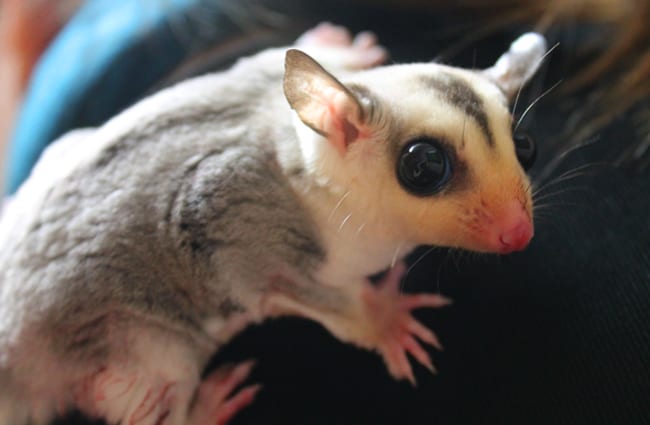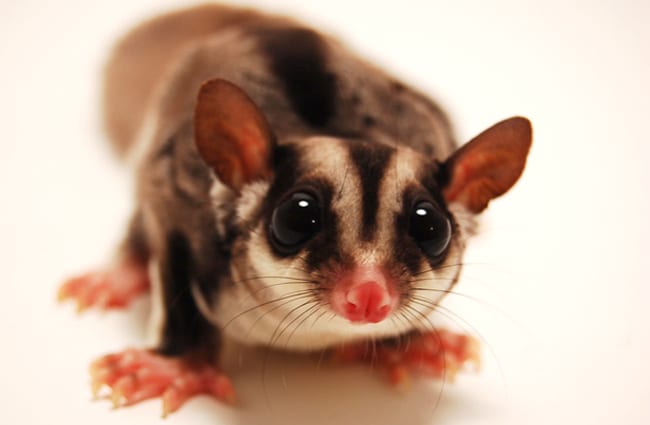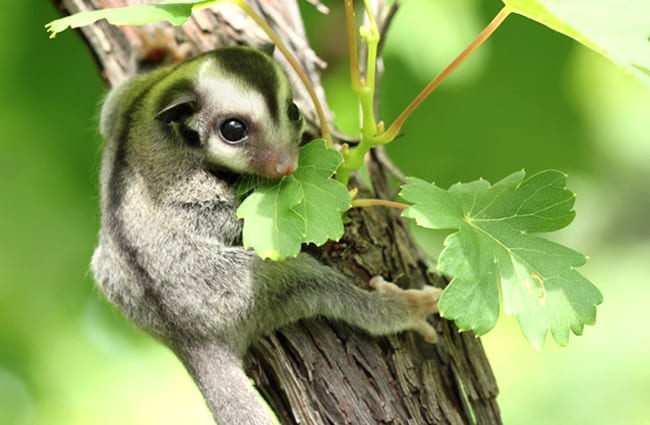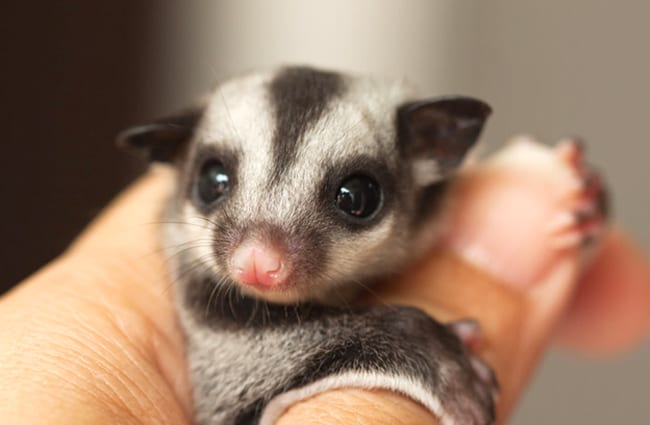The world’s smallest gliding marsupial, the sugar glider, is a captivating creature found across a broad swathe of Australia, New Guinea, and Indonesia. These nocturnal acrobats are renowned for their ability to soar through the forest canopy, utilizing a unique membrane that stretches between their wrists and ankles. Beyond their aerial prowess, sugar gliders exhibit a complex social life, intricate communication methods, and a crucial role in their ecosystems.

Unveiling the Sugar Glider
Basic Biology and Physical Characteristics
Sugar gliders, scientifically known as Petaurus breviceps, are small marsupials, typically weighing between 80 and 150 grams and measuring 24 to 30 centimeters in length, including their tail. Their soft, grey fur provides excellent camouflage within the trees. The most defining feature is the patagium, a gliding membrane extending from their forelegs to hindlegs. This membrane allows them to glide distances of up to 50 meters, effectively navigating the forest and escaping predators. Their large eyes provide excellent night vision, and their sensitive paws enable them to grip branches with ease. They possess a prehensile tail, used for balance and as a fifth limb during climbing.
Habitat and Distribution
Sugar gliders are native to eastern and northern Australia, New Guinea, and a few Indonesian islands. They inhabit a variety of forest types, including eucalyptus forests, rainforests, and woodlands. Their preference is for forests with mature trees offering plentiful food sources and suitable nesting sites. They are arboreal animals, rarely descending to the ground. They build nests in tree hollows, often utilizing preexisting cavities created by other animals or natural formations. The availability of suitable tree hollows is a critical factor influencing their distribution and population density.
A Deep Dive Into Sugar Glider Life
Diet and Foraging Behavior
Sugar gliders are omnivores, with a diet primarily consisting of sap from eucalyptus and acacia trees, along with insects, pollen, and nectar. They have a particular fondness for the sugary sap, which gives them their name. They are also known to consume fruits, flowers, and the occasional small insect or spider. Their foraging behavior is largely nocturnal, venturing out under the cover of darkness to locate food sources. They use their keen sense of smell to detect sap flows and insect activity. They are efficient foragers, often traveling several kilometers each night in search of sustenance.

Social Structure and Communication
Sugar gliders are highly social animals, living in colonies that typically consist of 6 to 10 individuals, though larger groups have been observed. These colonies are often family based, with a breeding pair and offspring. They exhibit complex social hierarchies, with individuals vying for dominance and access to resources. Communication is achieved through a variety of vocalizations, including barks, chirps, and squeaks. They also use scent marking to establish territories and communicate with other members of the colony. Allogrooming, or mutual grooming, plays a crucial role in maintaining social bonds and reinforcing group cohesion.
Reproduction and Life Cycle
Sugar gliders typically breed during the warmer months, with females capable of producing up to three litters per year. Gestation lasts approximately 15 to 18 days, resulting in the birth of one to three joeys. These joeys remain in the mother’s pouch for approximately 40 to 50 days, feeding on milk. After leaving the pouch, the joeys are carried on their mother’s back until they are fully weaned and independent. Sexual maturity is reached at approximately 8 to 12 months of age. The average lifespan of a sugar glider in the wild is approximately 6 to 8 years, though they can live longer in captivity.

Ecological Role and Interactions
Contribution to Ecosystem
Sugar gliders play a vital role in their ecosystems as pollinators and seed dispersers. By feeding on nectar and pollen, they contribute to the reproduction of various plant species. Their foraging behavior also helps to disperse seeds, promoting plant diversity and regeneration. As insectivores, they help to control insect populations, preventing outbreaks that could damage vegetation. They are also prey for larger predators, such as owls, snakes, and quolls, contributing to the food web dynamics of their ecosystems.
Interactions with Other Animals
Sugar gliders often share their habitat with other arboreal mammals, such as possums and gliders. They compete with these animals for resources, such as food and nesting sites. However, they also exhibit some degree of tolerance, often coexisting within the same trees. They also interact with birds, insects, and reptiles, forming complex relationships within the forest ecosystem. Their presence or absence can significantly impact the structure and function of their habitat.
Sugar Gliders and Humans
Cultural Significance
In Australian Aboriginal cultures, sugar gliders hold a special significance. They are often featured in Dreamtime stories and traditional artwork, representing agility, playfulness, and connection to the land. In some Indigenous communities, they have historically been used as a food source, although they are not commonly hunted. Their unique characteristics and ecological role are also appreciated by many people, fostering a sense of respect and stewardship towards these fascinating creatures.

Human Impact and Conservation
Sugar glider populations are facing increasing threats from habitat loss, fragmentation, and climate change. Deforestation, urbanization, and agricultural expansion are destroying their forest habitat, reducing their food sources and nesting sites. Climate change is also altering their ecosystems, impacting the availability of food and water. Conservation efforts are crucial to protect sugar glider populations and ensure their long term survival. These efforts include habitat preservation, reforestation, and sustainable land management practices. Responsible pet ownership and avoiding the illegal wildlife trade are also essential to protect these vulnerable creatures.
Encountering a Sugar Glider in the Wild
If you are fortunate enough to encounter a sugar glider in the wild, it is important to observe it from a distance and avoid disturbing its natural behavior. Do not attempt to approach or handle the animal, as this could cause stress or injury. Keep noise levels to a minimum and avoid shining bright lights on the animal. If you find an injured or orphaned sugar glider, contact a local wildlife rehabilitation center for assistance.
Caring for Sugar Gliders in Captivity
Sugar gliders require specialized care in captivity, including a large enclosure with plenty of climbing opportunities, a balanced diet, and regular veterinary checkups. They are social animals and should be kept in pairs or small groups. Providing appropriate enrichment, such as toys, tunnels, and foraging opportunities, is essential to keep them mentally and physically stimulated. Strict hygiene standards should be maintained to prevent the spread of diseases. It is important to research the specific needs of sugar gliders before acquiring them as pets.

Fascinating Facts About Sugar Gliders
- Sugar gliders can rotate their feet 180 degrees, allowing them to grip branches from any angle.
- They have scent glands on their foreheads, chests, and near their tails, used for communication and marking territory.
- Their gliding membrane is not a wing, but rather a specialized skin flap that allows them to glide between trees.
- They can enter a state of torpor, a period of reduced metabolic activity, to conserve energy during periods of food scarcity.
- Sugar gliders are capable of learning tricks and solving puzzles, demonstrating their intelligence and adaptability.

The sugar glider stands as a remarkable example of adaptation and ecological importance. Their unique abilities and charming personalities continue to captivate scientists and nature enthusiasts alike. Protecting their habitat and ensuring their long term survival is a responsibility we all share, safeguarding a vital component of the Australian and Southeast Asian ecosystems for generations to come.

![Red Angus Closeup of a beautiful Red Angus cowPhoto by: U.S. Department of Agriculture [pubic domain]https://creativecommons.org/licenses/by/2.0/](https://animals.net/wp-content/uploads/2020/03/Red-Angus-4-238x178.jpg)




![Red Angus Closeup of a beautiful Red Angus cowPhoto by: U.S. Department of Agriculture [pubic domain]https://creativecommons.org/licenses/by/2.0/](https://animals.net/wp-content/uploads/2020/03/Red-Angus-4-100x75.jpg)

